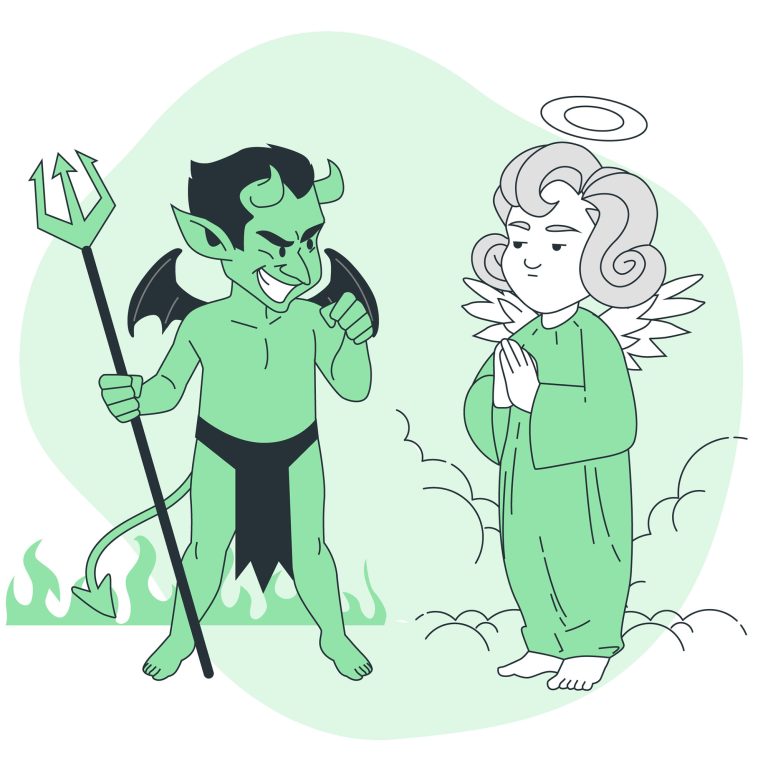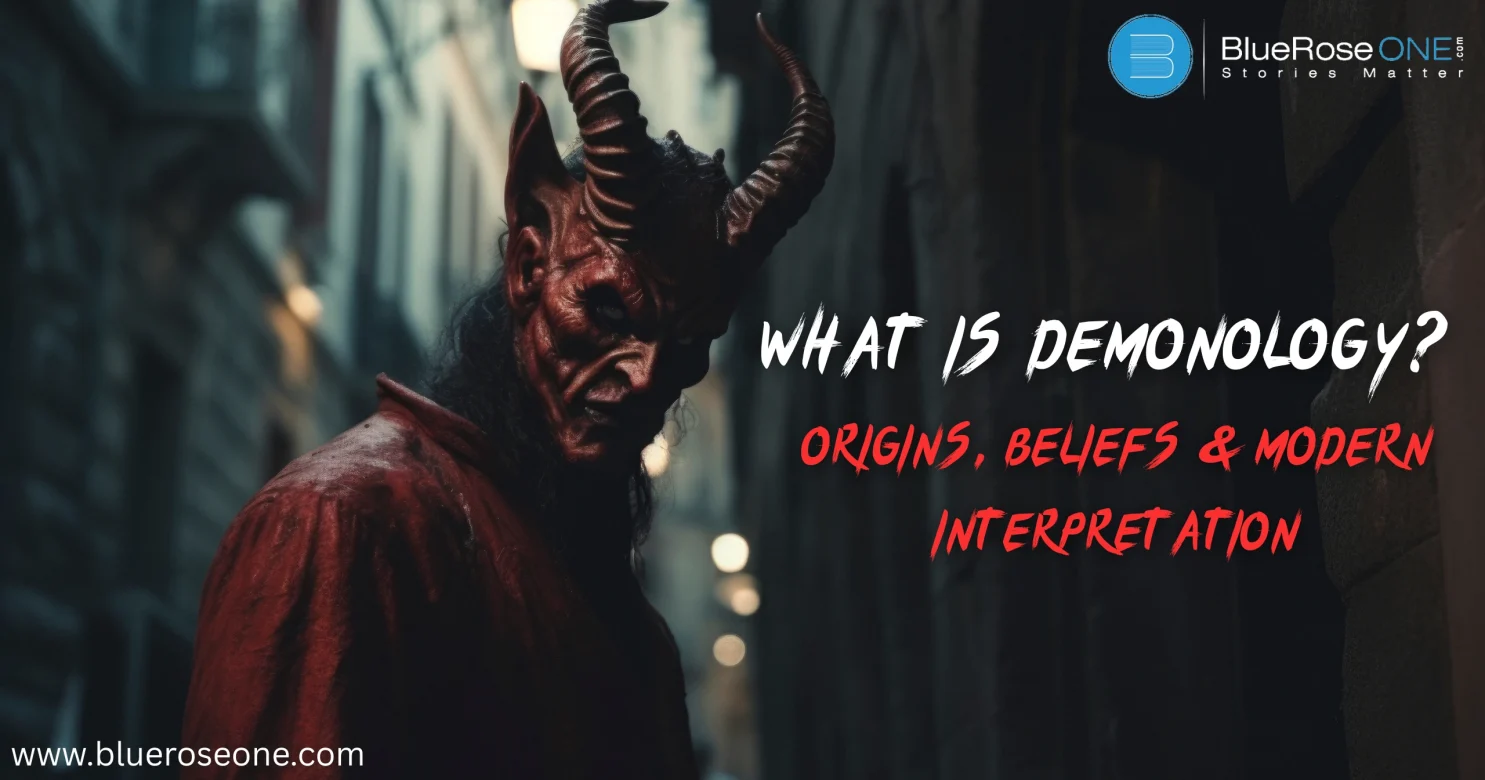Ever found yourself intrigued by the dark and mysterious world of demons? You’re not alone. Demonology, the study of demons, stretches back thousands of years, bridging ancient mythologies, religious doctrine, psychological theories, and pop culture. But it’s more than just scary stories it’s a reflection of human fears, beliefs, and cultural evolution.
In this article, we’ll peel back the shadows to explore what demonology is all about where it began, how it’s changed, and why it’s still so popular today.
Origins of Demonology
Early Mentions in Ancient Civilizations
Before there were devils and demons as we know them today, ancient people believed in malevolent spirits that caused illness, misfortune, and madness. In Mesopotamia, for example, demons like Lamashtu were blamed for infant death, while Pazuzu could both harm and protect, depending on how you used his name.
Demonology in Mesopotamia and Egypt
Influence of Zoroastrianism
Zoroastrianism introduced the idea of cosmic dualism: good vs evil, light vs dark. The demon Angra Mainyu (Ahriman) became a model for the concept of Satan in later Abrahamic faiths.
You may also like: Top 10 Types of Novels That Dominate Bestseller Lists

Demonology in Religious Texts
Demons in the Hebrew Bible and Old Testament
Demons are mentioned seldom but definitely in the Hebrew Bible and Old Testament. Deuteronomy 32:17 and Psalm 106:37 use the term “shedim” to describe evil spirits that are frequently associated with alien deities. In Leviticus 16, another character, Azazel, is mentioned as a wilderness being associated with the presence of sin.
These writings depict demons less as fully developed malevolent entities and more as chaotic or impure forces, in contrast to later Christian demonology. Early Jewish and Christian conceptions of spiritual enemies were influenced by them.
New Testament and Christian Demonology
Christian demonology emerges in the New Testament from narratives of Jesus casting out demons and confronting evil spirits, emphasizing the reality of demonic forces. These writings depict demons as fallen angels under Satan’s control who influence human behavior and health.
Unlike older Hebrew scriptures, the New Testament has a more developed demonological framework that connects spiritual conflict to faith and redemption. This theological perspective had a tremendous impact on later Christian doctrines and early printed religious literature.
Demonic Beings in Islamic Teachings
In Islamic teachings, demonic beings are primarily represented by jinn and shayatin (devils). The Qur’an describes jinn as invisible creatures created from smokeless fire, capable of both good and evil (Surah Al-Hijr 15:27). Shayatin, led by Iblis (Satan), are associated with temptation and misguidance.
Unlike Western demonology, Islamic demonology emphasizes free will in jinn, highlighting their accountability. These entities play significant roles in moral and spiritual struggles discussed in Islamic theology.
You may also like: The Mighty Red by Louise Erdrich: A Deep Dive into Her Latest Novel
You may also read: Tone Examples in Literature: 15 Must-Know Types With Examples
Key Concepts in Traditional Demonology
Hierarchies of Hell
In classical demonology, the Hierarchies of Hell are hierarchical rankings of demonic creatures that are frequently based after human social systems and influenced by medieval Christian thinking.
These hierarchies, popularized by grimoires such as The Lesser Key of Solomon and Dante’s Inferno, divide demons into orders (such as kings, dukes, and knights), each with their own set of powers and tasks. This arrangement indicates a religious attempt to impose order on chaos, similar to the celestial hierarchy of angels in Christian cosmology.
Famous Grimoires and Their Use
Grimoires are ancient magic books that played an important role in old demonology. Rituals for summoning and controlling spirits or demons can be found in texts such as the Key of Solomon, the Lesser Key of Solomon (Lemegeton), and the Grand Grimoire.
Occultists employed grimoires, which were often handwritten and passed down through generations, to conjure supernatural forces for protection, power, or wisdom. Their frequent use emphasizes the historical connection between early print culture and mystical traditions.
Summoning, Binding, and Banishing
Summoning, Binding, and Banishing are core practices in traditional demonology, often found in ancient grimoires and occult rituals. Summoning refers to the act of calling a spirit or demon into the physical world, usually through complex symbols or incantations.
Binding involves gaining control over the entity, typically using protective circles, talismans, or divine names. Banishing is the final step, where the practitioner commands the spirit to depart, ensuring safety and restoring spiritual balance after contact with the supernatural.
You may also read: Top 15 Short Novels to Read in a Weekend
Notable Demons Across Cultures
Western: Lucifer, Beelzebub, Asmodeus
In Western demonology, Lucifer is often identified as the fallen angel who defied God, symbolizing pride and rebellion. Beelzebub, originally a Philistine deity, became known in Christian tradition as a high-ranking demon associated with gluttony and corruption.
Asmodeus, drawn from Jewish and Christian lore, is linked to lust and appears in texts like the Book of Tobit. These figures shaped medieval beliefs and were frequently referenced in literature, art, and religious texts throughout Europe.
Eastern: Oni, Rakshasas, and Djinn
In Eastern cultures, demons frequently represent cultural fears and moral precepts. In Japanese tradition, Oni, horned ogres noted for their strength and brutality, are sometimes utilized to terrify children into good behavior.
In Hindu and Buddhist mythology, Rakshasas are shape-shifting demons who fight holy entities and disturb rituals. Meanwhile, in Islamic and Middle Eastern folklore, Djinn (or Jinn) are magical entities formed of smokeless fire who may be both good and wicked, mirroring humanity’s inner conflict.
African and Indigenous Perspectives
In African and Indigenous cultures, devils are frequently viewed as spiritual entities associated with balance, nature, and ancestral realms rather than exclusively evil beings. Many African traditions, such as the Yoruba belief system, see spirits like the Ajogun as agents of misfortune that are part of a larger cosmic order.
Similarly, Indigenous groups in the Americas regard hostile spirits as part of their mythical understanding of the natural world, frequently serving as cautionary characters or symbols of disrupted balance.
You may also like: Mindset Shift by Sharani Ponguru | Book Review
You may also read: 150 Words That Start with K to Level Up Your Vocabulary
Ethical Concerns and Misconceptions
Demonization of Mental Illness
Misinformation and cultural fear have long driven the demonization of mental illness, with people suffering from mental illnesses frequently portrayed as dangerous and unstable. This stigma dates back to early recorded literature, when mental illness was usually associated with moral failings or supernatural causes.
As printing technology advanced, so did these destructive narratives, confirming popular misunderstandings. Such depictions have long-term ethical ramifications, shaping views about mental health treatment and perpetuating discrimination even now.
Cultural Appropriation and Spiritual Harm
Cultural appropriation is a crucial ethical issue in contemporary studies in demonology. Many traditions, including Indigenous, African, and Eastern spiritual systems, include complex beliefs regarding spirits that are frequently oversimplified or misinterpreted by outsiders.
When these ideas are removed from their context, particularly for amusement or profit, they can cause spiritual hurt and contempt. Misrepresenting holy rites or demons from non-Western cultures not only distorts their meaning, but also contributes to damaging stereotypes.
Navigating Belief Without Fear-Mongering
Navigating believing without instilling terror is critical for comprehending demonology responsibly. While demonology investigates creatures commonly regarded as wicked, responsible research avoids sensationalism and damaging prejudices.
Fear-based narratives are frequently the result of religious or cultural misunderstandings, which lead to discrimination or terror. Instead, scholars and practitioners argue for a respectful, analytical approach to separating myth from fact.
This promotes a deeper understanding of ancient beliefs while without installing dread, allowing modern interpretations to be informed, inclusive, and free of superstition-driven worry.
You may also like: Nosferatu: The History of the First Vampire in Film
Should You Study Demonology?
Academic vs. Occult Interest
When considering whether to study demonology, it’s important to distinguish between academic and occult approaches. Academically, demonology is explored through theology, anthropology, literature, and history, often focusing on cultural beliefs and religious texts. Scholars examine how societies interpret evil and the supernatural.
In contrast, occult interest involves a practical, esoteric pursuit, where individuals engage with rituals, spirit communication, or personal belief systems. Your intent—intellectual inquiry or spiritual exploration—should guide your choice of study path.
Safety Tips for Curious Beginners
- Don’t summon what you can’t banish.
- Always protect your space.
- Ground yourself in logic and research
Recommended Readings and Sources
- The Dictionary of Demons by Michelle Belanger
- The Lesser Key of Solomon
- Demoniality by Ludovico Maria Sinistrari
- Online archives like sacred-texts.com
You may also like: Who Is Rachel Khong? Biography, Writing Style & Famous Books
Conclusion
Demonology isn’t just a study of monsters it’s a deep dive into the soul of humanity. Through every culture, text, and tale, we find pieces of ourselves: fear, power, rebellion, and mystery. Whether you’re a scholar, skeptic, or seeker understanding demons means understanding our deepest drives and darkest corners.
















